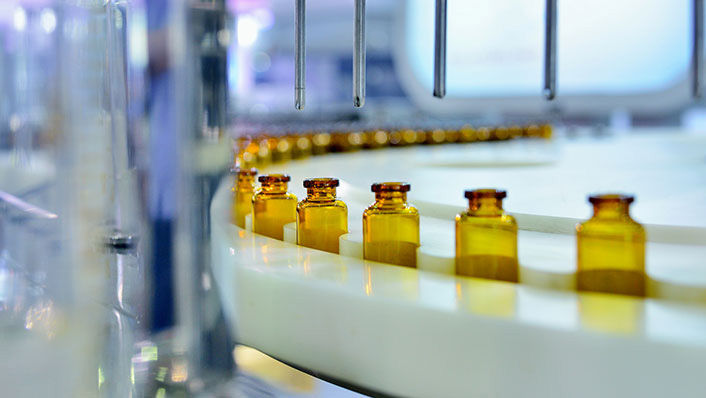The Benefits of Custom Bonded Silica
Applications in Biopharmaceutical Manufacturing

What an exciting time to be in the biopharmaceutical industry. Decades of research in biochemistry, immunology, and genetics have led to major breakthroughs in vaccine technologies, treatments for autoimmune diseases, and chemotherapies. This success is reflected in biopharmaceutical sales, which reached about $460 billion in 2022 and are expected to grow by 10% annually until 2030.
These achievements have brought benefits to patients, as well as challenges for maintaining manufacturing quality and efficiency. Scientists and engineers must innovate to meet the demands of increased production schedules without compromising purity.
Using Chromatography for Purification in Biomanufacturing
Purification is one of the manufacturing steps in which the tension between quality and efficiency is apparent. Biotherapeutic molecules, such as nucleic acids or antibodies, must be separated from the cellular debris and other chemicals found in bioreactors.
Chromatography is often used for purification. But off-the-shelf chromatography resins do not always meet the rigorous requirements of biopharmaceutical manufacturing. “Typically, scientists come to us when they can’t get the right purification,” says Dr. Reno Nguyen, purification technology manager at Grace. “They can’t separate the different components or get the impurities out. Also, they may not be achieving the yields they need.”
Grace Custom Bonded Silica for Chromatography
Custom bonded silica from Grace for chromatographic applications helps biopharmaceutical development teams solve their purification problems. We work with our partners to develop a silica resin with a specialized ligand that selectively binds molecule of interest.
Custom bonding involves three steps.
- Surface modification: The surface of the silica is modified so it can bond or interact with the chosen ligand or functional group.
- Ligand or functional groups attachment: The molecule that interacts with the sample is chemically bonded to the silica. This may include custom ligands that are designed according to the material that must be purified.
- Endcapping: Any remaining reactive sites on the support surface may be capped to reduce unwanted interactions during chromatographic separation.
Accelerating Biopharmaceutical Manufacturing
Grace has developed silica for a variety of biopharmaceutical applications addressing a wide range of separation challenges. For example, Grace offers a VYDAC® silica with a proprietary polymeric bonding chemistry, which shows high therapeutic protein recoveries and yields. The silica’s pore size is also highly consistent, which enhances resolution.
Such features lead to real improvements in performance. “You can purify more material in one purification cycle, which leads to less solvent usage, less cleaning, less stress on the material, and extended life cycles,” said Dr. Gonda van Essche, Grace’s director of technical customer service. Our proven history and expertise in manufacturing allow us to produce silica at any scale while maintaining consistency between batches. Together, these innovations support greater efficiency and reproducibility throughout the biomanufacturing process.
Biopharmaceuticals is a highly regulated industry, so custom solutions can often be challenging to implement. The Grace team has extensive experience working with companies bringing pharmaceuticals to market and can support your regulatory team throughout this complex process.
Innovations in Chromatography Silica
Grace continues to be a pioneer in this industry, with more than 45 years of experience in the field of custom bonded silica for chromatography. Our knowledge extends to bonding different resins and chemistries, including reversed and normal phase (C1, C2, C4, C8, C18, phenyl, amino, diol, polyethyleneimine, cyano), ion exchange, and other chemistries used in affinity chromatography.
We also manufacture DAVISIL®, a spherical monodisperse silica that is one of the world's most widely used chromatography resins. In addition to VYDAC® and DAVISIL®, Grace is expanding its spherical silica line, which is helpful for applications that require high-resolution separations and reproducible packing in axial compression columns.
No matter what happens next in biopharmaceutical manufacturing, Grace’s team of scientists is here to help achieve better quality and efficiency with our custom bonded silica solutions. Contact our team today to discuss your next project.